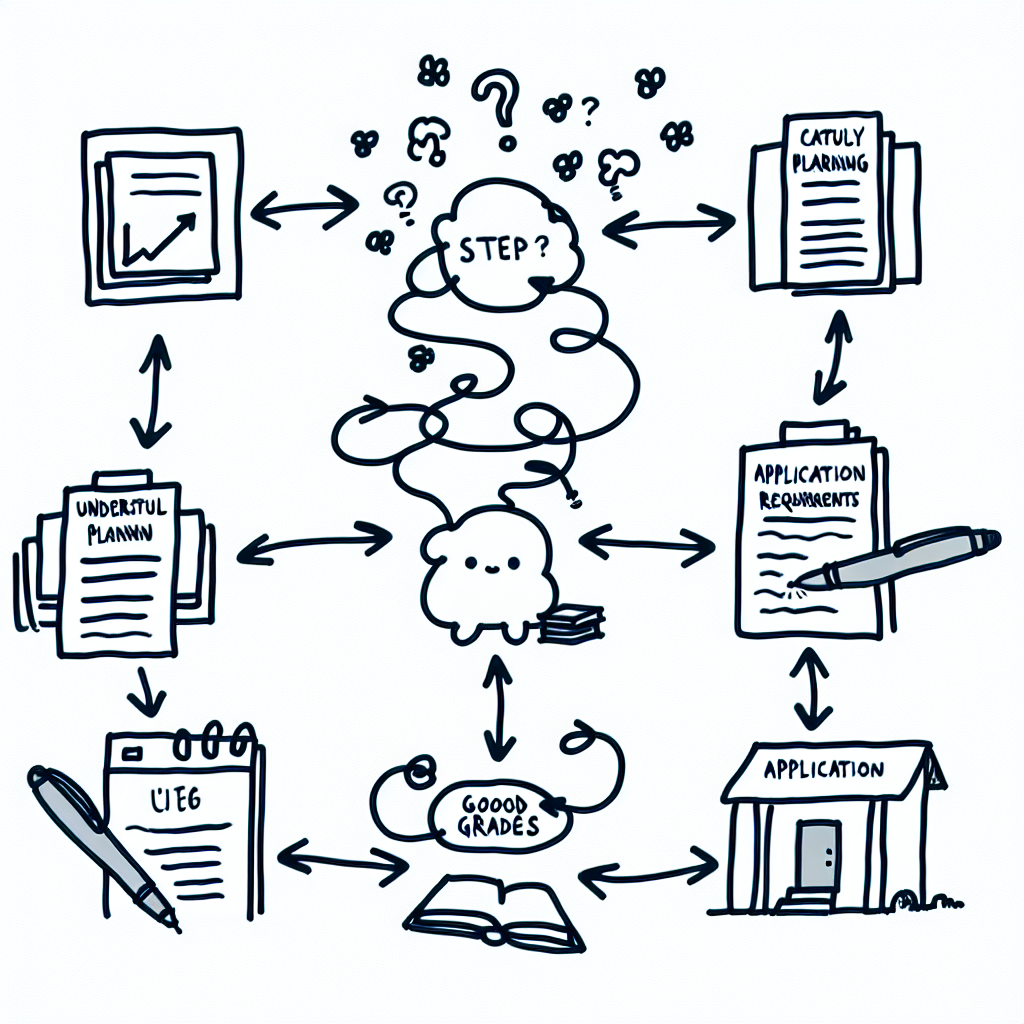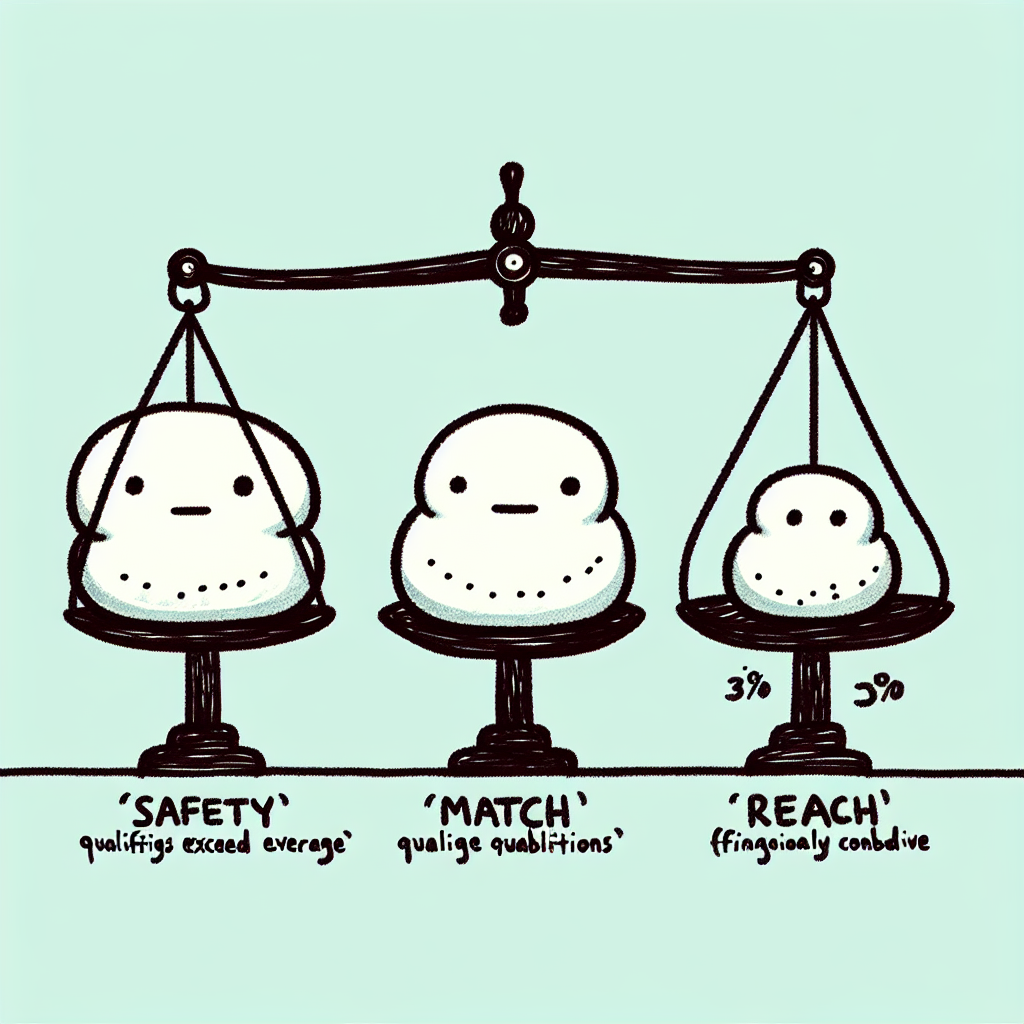Introduction
The college admissions process can feel overwhelming, but the right tools and strategies can simplify the journey. Understanding how to get into college involves more than just good grades—it requires careful planning, knowledge of application requirements, and strategic decision-making.
This guide synthesizes expert resources and data-driven insights to help students navigate every step toward getting into college. From building a strong academic profile to selecting the right schools and preparing compelling applications, each section is designed to support students with actionable advice and up-to-date information on how to get into college.

Step 1: Understand Your Goals and Preferences
Before diving into applications, the first step in learning how to get into college is understanding your own goals and preferences. This foundation will guide every decision you make throughout the process.
Define Your Academic and Career Aspirations
Begin by considering your long-term goals. Think about what you want to study and the kind of career you envision. Whether you're interested in engineering, the arts, healthcare, or business, identifying potential majors or fields of interest will help you target schools that offer strong programs in those areas.
Assess Your Academic Profile
Take an honest look at your academic record. This includes your GPA, class rank, and standardized test scores such as the SAT or ACT. Also consider your extracurricular activities, leadership roles, and any honors or awards.
Compare your academic profile with the benchmarks of colleges you're interested in. Tools such as those provided by U.S. News - Admissions Statistics can help you see where you stand relative to accepted students.
Know What You Want in a College
Think about the type of college experience you want. Do you prefer a large university or a small liberal arts college? Are you drawn to an urban campus or a rural setting? Consider factors like campus culture, athletics, available academic programs, and support services.
Use technology to explore options and match colleges to your preferences. Tools highlighted in U.S. News - Plug Into Technology can help you filter schools based on your criteria, making it easier to find the right fit.

Step 2: Researching Colleges Effectively
Researching colleges is a critical part of understanding how to get into college. Using reliable tools and digging into college profiles can help you make informed decisions about where to apply.
Use Reliable Tools for College Search
Start by using trustworthy search tools to filter colleges based on your preferences:
- NCES College Navigator: This government-run database allows you to search for colleges by location, tuition, school size, available majors, and more. It's a data-rich tool that helps you narrow your list based on objective criteria (NCES College Navigator).
- U.S. News Best Colleges Directory: This resource offers rankings and side-by-side comparisons of over 1,800 colleges. It includes information on academic reputation, graduation rates, and financial aid statistics (U.S. News Directory).
Dive Deep Into College Profiles
Once you've identified potential schools, examine each college's profile. Focus on:
- Acceptance rates
- Graduation rates
- Student-to-faculty ratios
- Financial aid availability
Tools like College Navigator allow you to save and compare colleges side-by-side, making it easier to weigh your options.
Explore Virtual Tours and Student Reviews
To get a better feel for campus life, take advantage of virtual tours available on college websites and platforms like YouVisit. Additionally, student reviews on sites like Niche can offer insights into the social atmosphere, academic rigor, and campus facilities. These resources can help you assess whether a college is the right fit before you apply.

Step 3: Build a Balanced College List
When learning how to get into college, it's essential to create a well-rounded list of schools. This helps ensure you have viable options when admissions decisions are released. A balanced college list includes a mix of safety, match, and reach schools.
Categorize Schools
Safety Schools: These are colleges where your academic credentials—such as GPA and standardized test scores—significantly exceed the school's average admitted student. You should feel confident about gaining admission to these institutions.
Match Schools: At these schools, your academic profile closely aligns with that of a typical admitted student. While not guaranteed, your chances of acceptance are reasonably strong.
Reach Schools: These colleges have very competitive admissions, and your academic profile may fall below the school's average. While they are more difficult to get into, it's still worth applying if you're interested.
Consider Financial Fit
In addition to academic compatibility, think about the financial aspect of each school. Review the total cost of attendance, including tuition, room and board, and other expenses. Research what types of financial aid and scholarships each college offers.
Meeting with your high school counselor can help you understand your options for financial aid and identify opportunities that align with your budget. According to the National Center for Education Statistics, most high school students benefit from discussing financial aid with their school counselors (NCES - Counseling & Financial Aid).
Balancing academic fit with financial feasibility is a critical part of how to get into college and make a smart decision for your future.

Step 4: Prepare Strong Applications
Preparing strong applications is a crucial step in the process of how to get into college. Each component of your application should reflect your strengths, interests, and fit for the schools you are applying to.
Master the Common Application and Other Platforms
Start by understanding the different platforms colleges use, such as the Common Application, Coalition Application, or school-specific portals. Each platform typically requires personal information, academic history, a list of extracurricular activities, essays, and letters of recommendation. Be thorough and accurate when entering your information. Pay attention to deadlines and requirements for each college, as they may differ slightly depending on the platform.
Write Compelling Essays
College essays are an opportunity to share your story beyond grades and test scores. Use them to highlight your personality, values, and meaningful experiences. Take time to brainstorm and revise your essays carefully. When schools provide specific prompts, tailor your response to reflect a genuine interest in that institution. Avoid generic responses—colleges want to see that you’ve thought deeply about why you’re applying to their school.
Secure Strong Letters of Recommendation
Choose recommenders who know you well and can speak to your academic abilities, character, and potential. Ideally, these are teachers, counselors, or mentors who have worked with you closely. Provide them with plenty of notice and include a resume or summary of your accomplishments and goals to help them write a strong, personalized letter. Make sure to follow each college’s guidelines on how letters should be submitted.
Prepare for Interviews (if required)
Some colleges require or recommend interviews as part of the application process. Prepare by practicing common interview questions and thinking about how to articulate your experiences and aspirations. Research the school beforehand so you can speak knowledgeably about specific programs or opportunities that interest you. Demonstrating genuine enthusiasm and preparedness can leave a positive impression on your interviewer.

Step 5: Organize and Submit
Staying organized is essential when learning how to get into college. Each school may have different application components and deadlines, so it’s important to keep track of everything carefully.
Track Deadlines and Requirements
Understand the differences between Early Action, Early Decision, and Regular Decision:
- Early Action allows you to apply early and receive a decision sooner, but it is non-binding.
- Early Decision is also early but binding—if accepted, you must attend.
- Regular Decision has a later deadline and is non-binding.
Create a spreadsheet or use an application dashboard to record each college’s deadlines and requirements. Include information such as application type, essay prompts, testing policies, and recommendation needs. This will help you manage your time and ensure no component is overlooked.
Double-Check Everything
Before submitting, carefully review all parts of your application:
- Make sure your essays are polished and answer the prompts.
- Confirm your test scores have been sent if required.
- Ensure your transcript is accurate and has been submitted by your school.
- Follow up with your recommenders to verify their letters have been sent.
Submit your applications before the deadline. Don’t wait until the last minute, as technical issues or other delays can occur. Being thorough and timely helps make your case stronger when figuring out how to get into college.

Step 6: After You Apply
Once you've submitted your college applications, there are still important steps to take in the process of how to get into college.
Monitor Application Portals
Most colleges provide an online application portal where you can track the status of your application. It's important to check these portals regularly to see if there are any updates or additional requests. Schools may ask for supplemental materials such as portfolios, writing samples, or to schedule an interview. Staying on top of these requests ensures your application remains complete and competitive.
Apply for Financial Aid
If you haven’t already, complete the Free Application for Federal Student Aid (FAFSA) as soon as possible. Many colleges also require the CSS Profile, especially private institutions, to determine eligibility for institutional aid. Pay attention to each college’s financial aid deadlines to avoid missing out on funding opportunities. Continue researching and applying for external scholarships, as they can significantly reduce your college expenses.
Staying engaged after submitting your applications is a crucial part of how to get into college. It demonstrates responsibility and helps ensure you don’t miss any important communications or opportunities.

Step 7: Decide Where to Enroll
Once you've received your college acceptance letters, the next step in learning how to get into college is deciding where to enroll. This decision should take into account more than just prestige—your academic goals, financial situation, and personal preferences all matter.
Review Acceptance Letters and Aid Packages
Start by carefully reviewing each college's acceptance letter and financial aid package. Compare the total cost of attendance, which includes tuition, housing, meals, books, and personal expenses. Look at how much aid is being offered—grants, scholarships, work-study, and loans—and whether that aid is renewable each year.
Also consider the academic strengths of each school in your intended major, the size and atmosphere of the campus, and extracurricular opportunities. Think about what environment will help you thrive both academically and personally.
Visit (or Revisit) Campuses
If possible, attend admitted student days or schedule campus visits. These events offer a chance to meet other students, talk to faculty, and get a feel for the community. If you can't visit in person, many colleges offer virtual tours and online Q&A sessions. Pay attention to how comfortable you feel on campus and whether it aligns with your expectations.
Make an Informed Decision
After comparing all factors, choose the college that best fits your needs. Confirm your enrollment by the deadline—usually May 1—by submitting your deposit and necessary paperwork. Be sure to also notify the other colleges that you’re declining their offers so they can offer spots to other students. Making a respectful and timely decision is an important final step in the process of how to get into college.

Conclusion
Learning how to get into college requires more than just good grades—it’s a multi-step process that includes self-reflection, research, and strategic planning. Understanding your strengths, interests, and long-term goals helps you identify schools where you’ll thrive both academically and personally.
Using technology and data-driven tools can also support your efforts. Platforms that offer college match algorithms, admissions statistics, and application tracking can simplify decision-making and improve your chances of success.
Ultimately, with a thoughtful approach, you can find a college that aligns with your academic goals and personal values. The process may be complex, but a clear strategy makes it manageable and rewarding.














